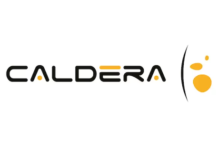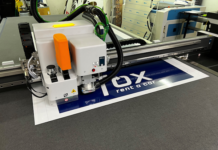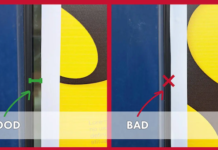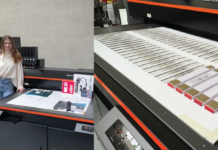According to Jimmy De Waal, B2B: Head of Marketing at Canon South Africa digital isn’t working as well as it used to, because consumers are turning off from it in growing numbers.
For some, it is about lack of trust — think of the Facebook/Cambridge Analytica scandal. For others, the volume of digital content is simply too great. So huge, in fact, that it has squeezed consumers’ average attention spans to as short as eight seconds.
Digital marketing has been high on brand owners’ agendas for much of the last decade, but for many marketing departments and their agencies, it now dominates discussion for the wrong reasons. Much of that digital content is poor. One commentator drew an unflattering comparison with the famous New York Times motto ‘All the news that’s fit to print’. Digital, he observed, ‘pretty much stops at ‘All’, adding that the good stuff ‘drowns in a sea of mediocrity and worse.’
If digital is the primary channel for your brand messages, you are in a fix. Turning off the digital channel is not an option, because digital marketing is here to stay. Consumers may be less enthusiastic than they once were, but personalised online interactions are part of the fabric of their online lives. What’s more, you have invested a lot in it. Both parties just want it to be more effective. It is against this backdrop that print is making a comeback. It is making headlines too, because the brands using it include giants of the digital economy — the likes of Facebook, Netflix, Airbnb and Amazon, all of whom have recently published printed magazines.
They are doing it because print is far better at ‘cutting through’ — at attracting consumers’ attention and getting messages across. Compared to digital, print has a physical presence. In the language of neuroscience, it is a ‘haptic’ medium, which means we perceive and manipulate it through touch.
Print is not only a lot easier on the eyes and ears than digital, it also has a non-verbal power that is way more effective than digital. We know this because a growing body of research proves it.
By using tools such as MRI scans, researchers have shown that our brains process printed media differently to digital. Print actually reaches deeper into our consciousness, even triggering activity in the part of the brain where we assess the value of products.
The US Postal Service found evidence that we spend more time engaging with print, which increases how much we recall the content. After all, even the act of throwing away a printed mailshot calls for more complex decision-making than simply pressing ‘delete’ on the keyboard.
Print outperforms digital in other ways as well. For Steve Jobs, a brand was ‘all about trust’, and print is more trusted. Opting for print involves a level of commitment that says something about your brand. It shows you are willing to spend a greater degree of time and money in communicating your messages.
This is likely one reason why a survey by the UK’s Royal Mail revealed that personalised print makes people feel more valued, leading the authors to conclude that ‘in the never-ending stream of two-way virtual communications, sending a direct sensory experience of your brand can mark a pivotal moment in the customer journey.’
At first sight, however, there is a flaw in the argument for adding print to a campaign — it lacks the ‘real-time’, automated, instantaneous response that consumers and brands have got used to. No matter how powerful and engaging printed content is, you have to design, approve, print and distribute it.
This is true, but much less important than you might think, thanks to Programmatic Print, which gives print a place in the automated marketing world. As the ‘programmatic’ label suggests, the concept is related to programmatic marketing (automated real-time bidding for online advertising) and to programmatic mail (where a customer’s online interaction generates a targeted piece of direct mail).
Programmatic Print links marketing automation platforms with the highly-automated digital print production workflow. The same up-to-date customer information that sends an email or triggers a banner ad is used to generate a personalised print file that delivers emotionally appealing, high-quality print to prospects — usually within 24 hours.
And the possibilities go far beyond simple direct items. You can use the full range of promotional print: brochures, catalogues, magalogues, customer magazines, brand books, newsletters, and so on. Programmatic Print is most powerful at ‘the time of high intent’ — that moment in the customer journey when engagement is at its strongest. Imagine you are a car manufacturer whose website allows customers to interactively try out paint and upholstery colours. The next morning a personalised brochure arrives in the post, the colours identical to those chosen yesterday. There’s a hotline number to the local dealer for a test drive too.
Abandoned online shopping baskets cost UK retailers up to £1 billion in lost sales each year, according to research. One smart fashion retailer set up an experiment to compare digital and print solutions to the problem. The online solution involved two emails, backed up by banner ads. The print solution added in a direct mail item showing the items in the abandoned basket.
Print cut the abandoned basket rate by 14%, increased response by 6%, and boosted average order value by 8%. Combining ‘print + pixels’ isn’t rocket science: marketing automation solutions are designed to integrate with a wide range of tools, including digital print. And there are many print service providers (PSPs) out there with automated print workflows who will be only too happy to help.
Before you call them, however, take some time to think about where — and how — you can best add print to your marketing. Assuming you already have a marketing automation solution in place, some starter questions are:
• How well is our marketing automation platform performing? What is working well, and what not so well?
• What ROI are we achieving ? Is it on par with the industry standard?
• How comprehensive is the customer data we hold? Are we making the most of it?
• And, crucially, where could we add print to the ‘mix’? Which products or services really lend themselves to print promotion?
Source : ‘The Private Life of Mail’ — Royal Mail Market Reach 2015
|
LOCAL DISTRIBUTOR |

















